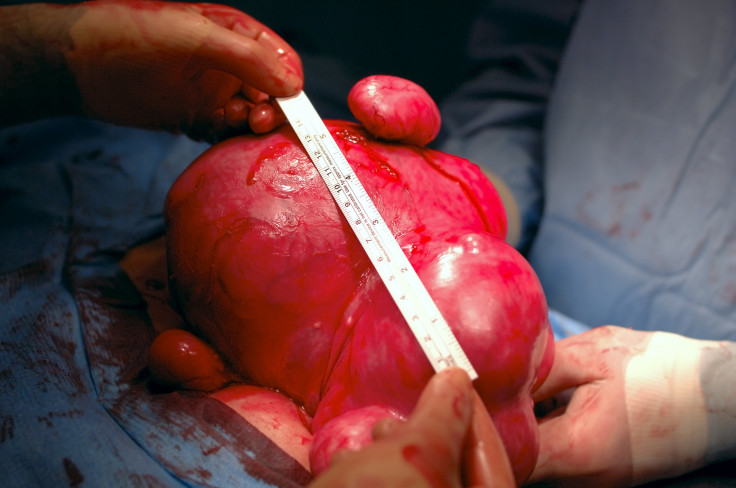Indian Woman Has Watermelon-Sized Tumor Removed From Uterus: Weighing 30lbs, It’s One Of The World’s Biggest

A tumor in a woman’s uterus, weighing 30 pounds and measuring about 21 inches in diameter, has become one of the biggest tumors in the world since its recent removal in India.
The 52-year-old woman, identified only as Latha, underwent a complex operation in Chennai, India, in order to remove the tumor. It was nearly the size of a watermelon. She hadn’t been aware of its presence, despite suffering breathlessness and fatigue for years, as well as an expanded stomach where the tumor was weighing down on her uterus and bladder.
The surgery “went on for three-and-a-half hours,” according to surgical gastroenterologist Dr. Shiva Kumar. It was “challenging as the fibroid, which takes blood supply to grow, had a lot of blood vessels attached to it. It was also stuck to the small bowel and omentum and was also pressing on the uterus. We had to carefully slice through and detach it.” In addition to the tumor removal, the surgeons cut out her uterus in order to prevent the tumor from growing back.
When she arrived in the hospital last month bleeding heavily, doctors identified the tumor and saw that she was anemic — and were “shocked” to discover the massive growth, Dr. Mani Mekalai, head of the hospital’s department of obstetrics and gynecology, told The Daily Mail. “In medical parlance, this is called a super giant uterine fibroid and the largest one removed before this, in Africa, weighed 21lbs,” Mekalai said. “From the sheer size of it, the tumor could have easily been there for more than 20 years.”
Uterine fibroids are actually relatively common, and are muscular tumors that grow inside the uterus wall. They are almost always benign, and can grow from the size of an apple seed to as big as a grapefruit or, in unusual cases, much bigger. According to the Office on Women’s Health, nearly 20 to 80 percent of all women develop some form of fibroid by age 50. They don’t always have symptoms, but some women may experience pain or heavy menstrual bleeding. In addition, women who are obese have a higher risk for fibroids, as well as women who eat a lot of red meat and ham.
Researchers aren’t entirely sure what causes fibroids, but some have linked it to estrogen in the past. The Office on Women’s Health writes: “Because no one knows for sure what causes fibroids, we also don't know what causes them to grow or shrink. We do know that they are under hormonal control — both estrogen and progesterone. They grow rapidly during pregnancy, when hormone levels are high. They shrink when anti-hormone medication is used. They also stop growing or shrink once a woman reaches menopause.”
Published by Medicaldaily.com



























